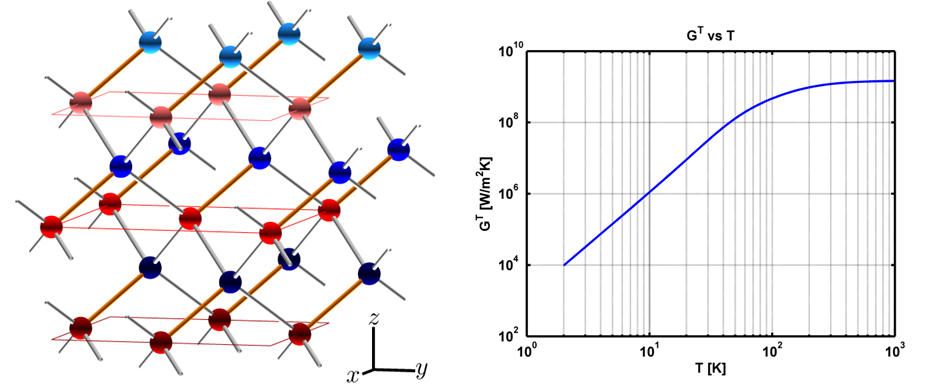Nanoscale Thermal Transport
03 April 2015
Nanoscale Thermal Transport:
Nanoscale fabrication and measurement techniques have uncovered new thermal transport phenomena which understanding is essential to face current thermal management challenges and opportunities [1]. For instance, the total thermal resistance of integrated circuits (IC) is dominated by interfacial thermal resistance which needs to be engineered to decrease heating and increase performance on the ICs. Also, nano-structured materials might be designed to obstruct phonon flow but favor electron flow providing better thermal isolator materials for thermoelectric devices. Our research focus on understanding phonon transport through nanoscale systems using Non-Equilibrium Greens Function (NEGF) formalism, which is particularly well suited for the task because of its atomistic precision which allow us to capture physics phenomena emerging from defects, impurities, chemistry, edges or any other atomistic detail of a device. We are currently working on understanding ballistic and anharmonic phonon transport through real nano-structures from inter-atomic potentials and from first principles calculations (Fig. 1)

Our group is also working on understanding the physics behind tuning thermal conductance at interfaces by thermal impedance matching. We study what are the absolute limits of interfacial thermal conductance, why those are the limits and what material needs to be chosen to achieve those limits. For example, we study which atomic junction in a 1D chain would caused maximum thermal conductance (Fig. 2).
